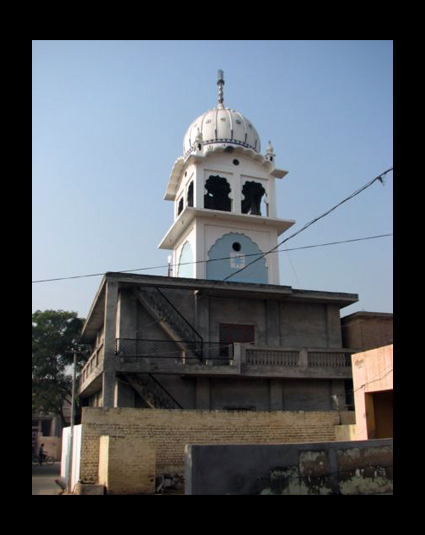Explore Langar Chhanni, sacred to Guru Tegh Bahadur. Discover its rich history and cultural significance in Ambala, Haryana.
KARHA SAHIB, a village 11 km west of Pehova (29"59`N, 76°35`E) in Kurukshetra district of Haryana, was visited by four of the Sikh Gurus. Guru Nanak came here during his travels to the eastern parts. Chaudhari Kalu of this village became a follower and is said to have constructed a bdoK his honour. The second of the Sikh Gurus to visit this village was Guru Hargobind. The local tradition places Guru Tegh Bahadur`s visit during his last journey to Delhi, but it is more likely that he passed through this village in the course of one of his earlier travels across the area. Guru Gobind Singh was here in 1702 when he visited the shrines established here in memory of the earlier Gurus. Bhai Udai Singh, the ruler ofKaithal (d. 1843), got three gurudwaras constructed in the same compound and made land grants for their maintenance. These simple structures were replaced by more elegant buildings during the early 1970`s by Sant Jivan Singh of Pehova. The three shrines are sometimes jointly called Triveni Sahib. Two identical shrines in the northern and southern parts of the walled compound are dedicated to Guru Nanak and Guru Tegh Bahadur, respectively. Gurdwara Patshahi Chhevin is in the centre to the east, thus forming the apex of the triangle. The entire compound has a marble floor. The Gurdwaras are affiliated to the Shiromani Gurdwara Parbandhak Committee, but arc for the present managed by the successors of Sant Baba Jivan Singh Scvavalc.
Discover the journey of Harkishan Das, a purohit who brought royal offerings from England to India's sacred sites. A tale of devotion and history.
Explore Gurdwara Aaduporh, where Guru Hargobind Ji's miracle solved a water crisis. Visit the historic well and enjoy vibrant celebrations.



